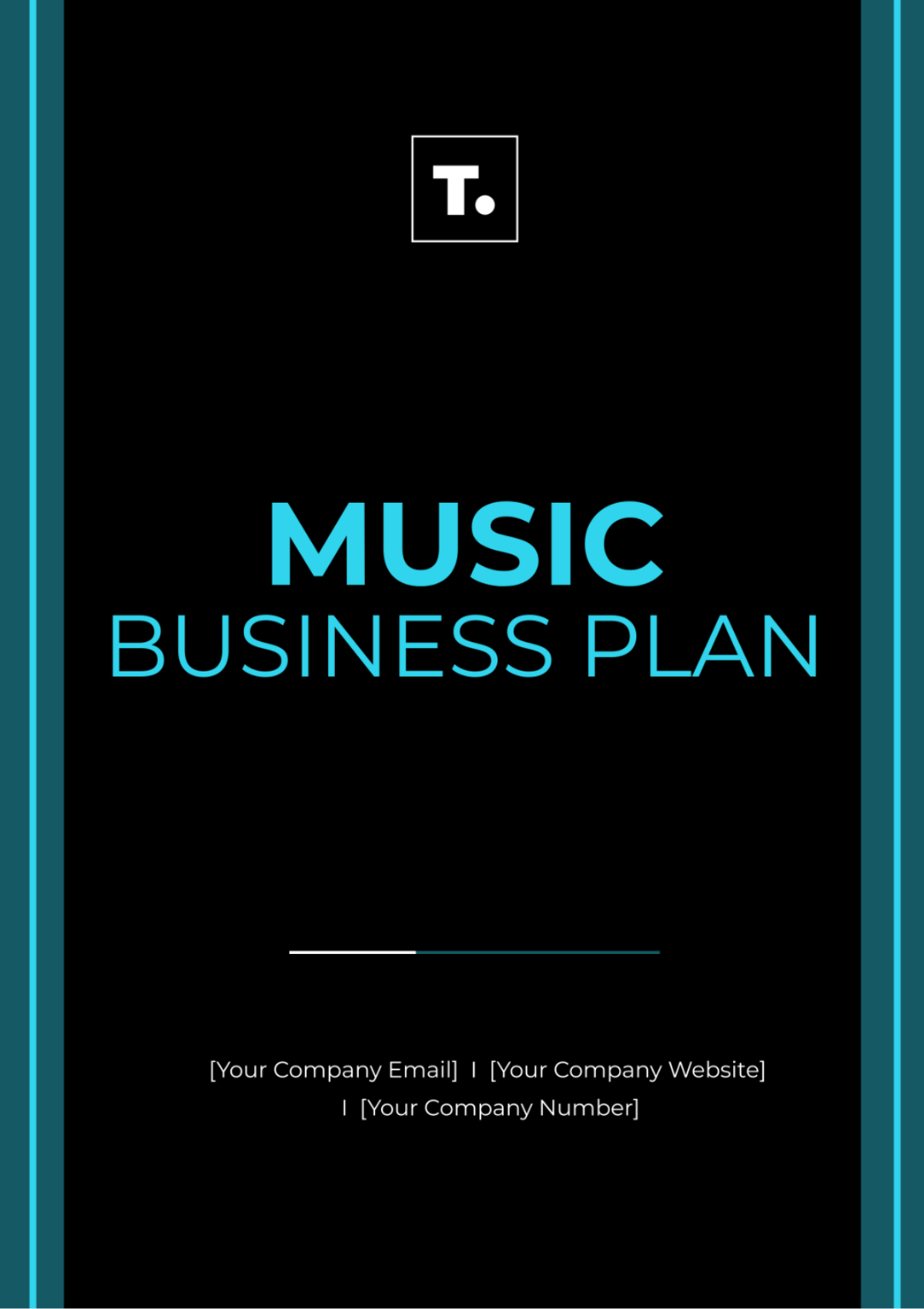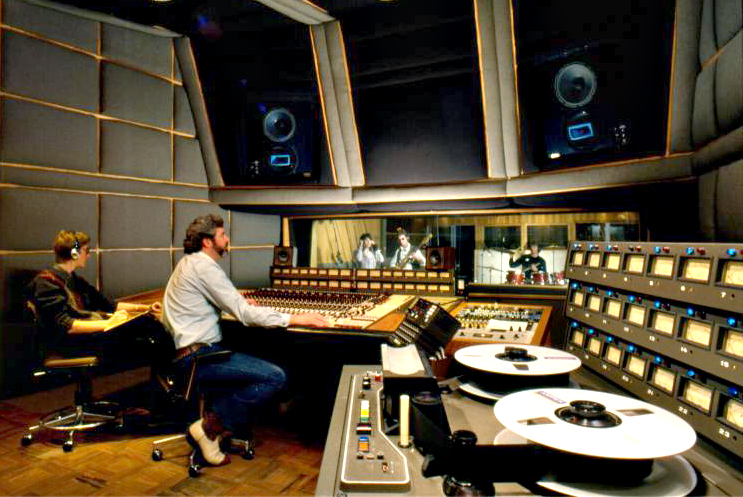Free Music Business Plan

I. Executive Summary
The [Your Company Name] Music Business Plan outlines the strategic direction and objectives for [Your Company Name], a dynamic music production and distribution company. Founded by [Your Name], the company aims to revolutionize the music industry by leveraging innovative technology and strategic partnerships.

A. Mission Statement
[Your Company Name] is committed to empowering musicians and artists by providing them with the tools, resources, and platforms needed to thrive in the digital age.
B. Vision Statement
To become a global leader in music production and distribution, fostering creativity, diversity, and sustainability in the music industry.
C. Objectives
Establish strategic partnerships with emerging artists and established labels.
Develop cutting-edge music production technology.
Expand market reach through digital distribution channels.
II. Business Description
[Your Company Name] is a music production and distribution company headquartered in Los Angeles, California. Founded in 2050, the company specializes in producing high-quality music across various genres and distributing it through digital platforms worldwide.
A. Company Background
[Your Company Name] was founded by [Your Name], a seasoned entrepreneur with a passion for music. With 6 years of experience in the music industry, [Your Name] has assembled a talented team of professionals dedicated to transforming the way music is created and consumed.
B. Products and Services
Music Production: Offering state-of-the-art recording studios and production facilities.
Artist Development: Providing mentoring, coaching, and support to emerging artists.
Digital Distribution: Distributing music to major streaming platforms and online stores.
C. Market Analysis
The music industry is rapidly evolving, with digital streaming now dominating music consumption. [Your Company Name] aims to capitalize on this trend by providing artists with the tools and platforms needed to succeed in the digital marketplace.
III. Marketing Plan
A. Target Market
[Your Company Name]'s target market includes emerging artists, independent labels, and music enthusiasts seeking high-quality, diverse content.
B. Competitive Analysis
Competitors in the music production and distribution space include major labels, independent studios, and online platforms. [Your Company Name] differentiates itself by offering personalized service, cutting-edge technology, and a commitment to artist empowerment.
C. Marketing Strategy
Social Media Marketing: Leveraging platforms like Instagram, Twitter, and TikTok to engage with fans and promote new releases.
Influencer Partnerships: Collaborating with influencers and tastemakers to reach new audiences.
Live Events: Hosting concerts, showcases, and listening parties to connect with fans and promote artists.

IV. Operations Plan
A. Production Process
Pre-production: Planning and preparation phase, including songwriting and rehearsals.
Recording: Capturing high-quality audio and video content in our state-of-the-art studios.
Post-production: Editing, mixing, and mastering to ensure a polished final product.
B. Distribution Strategy
Utilizing digital distribution platforms such as Spotify, Apple Music, and Amazon Music to reach a global audience.
C. Team Structure
[Your Company Name]'s team consists of experienced producers, engineers, marketers, and executives dedicated to delivering exceptional results for our clients.
V. Financial Plan
A. Revenue Streams
Music Sales: Revenue generated from digital downloads and streaming royalties.
Production Services: Income from studio rentals, session fees, and production packages.
Licensing and Sync Deals: Revenue from licensing music for film, television, and advertising.
B. Cost Structure
Production Costs: Expenses related to studio equipment, session musicians, and engineering services.
Marketing Expenses: Budget allocated for social media ads, influencer partnerships, and promotional events.
Overhead Costs: Including rent, utilities, salaries, and administrative expenses.
C. Financial Projections
Projected revenue for the first three years is $2,500,000, with anticipated growth driven by strategic partnerships, expanding market reach, and innovative product development.
VI. Conclusion
The [Your Company Name] Music Business Plan outlines a comprehensive strategy for success in the dynamic and competitive music industry. With a focus on innovation, creativity, and artist empowerment, we are poised to disrupt the status quo and become a global leader in music production and distribution.
- 100% Customizable, free editor
- Access 1 Million+ Templates, photo’s & graphics
- Download or share as a template
- Click and replace photos, graphics, text, backgrounds
- Resize, crop, AI write & more
- Access advanced editor
Elevate your music business with the Music Business Plan Template from Template.net. Tailored for entrepreneurs in the music industry, this template simplifies the process of creating a comprehensive business plan, ensuring thorough coverage of all essential aspects. With sections covering market analysis, artist development, marketing strategies, financial projections, and more, this template provides a solid framework for planning and executing your music business. With our Ai Editor Tool, customization is effortless, allowing you to tailor the plan to your specific business needs and goals, whether you're starting a record label, music production company, or artist management firm. Trust Template.net to provide the foundation for developing a professional and strategic business plan that will set your music business up for success. Simplify your business planning process and harmonize your way to success with confidence.
You may also like
- One Page Business Plan
- Coffee Shop Business Plan
- Restaurant Business Plan
- Food Business Plan
- Real Estate Business Plan
- Executive Summary Business Plan
- Cover Page Business Plan
- Nonprofit Business Plan
- Daycare Business Plan
- Construction Business Plan
- Startup Business Plan
- Medical Business Plan
- Bakery Business Plan
- Service Plan
- Hotel Business Plan
- Catering Business Plan
- School Business Plan
- Healthcare Business Plan
- Transportation Plan
- Sports Plan
- Car Wash Business Plan
- Salon Business Plan
- Clothing Business Plan
- Farming Business Plan
- Boutique Plan





























